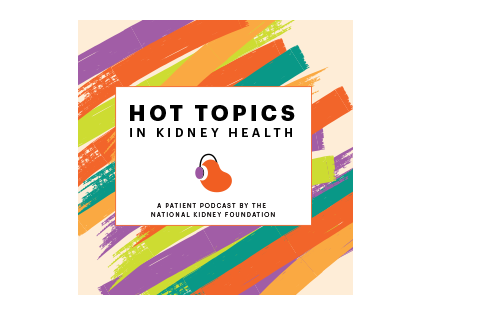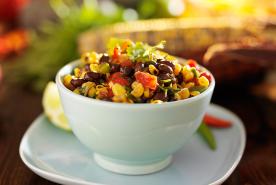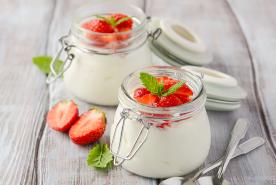Last Updated: May 05, 2023
Medically reviewed by NKF Patient Education Team
About Potassium
Potassium is an important mineral found in your body that is responsible for many functions. People living with kidney disease are at risk for having potassium levels outside of the goal range (either too high or too low). To keep your potassium levels in the goal range, you may need to watch how much potassium you are eating throughout the day. For more information about potassium, please visit the NKF Potassium AtoZ page.
If you have high potassium (hyperkalemia), your healthcare provider may advise you to limit certain foods that are higher in potassium. If you have low potassium (hypokalemia), you may be advised the opposite – increase the amount of potassium you eat in your diet.
One day, no one’s life will be lost to kidney disease.
- Equip patients and families with knowledge, resources, and access to high-quality care.
- Advocate for policies that address disparities and prioritize kidney health for all.
- Fund research and technology to advance early detection, improve treatment, and expand transplant access.
High-Potassium Foods and Low-Potassium Choices
Almost all foods have some potassium. A food that is considered “high-potassium” generally has 200 mg or more potassium per serving. While any food that meets this criteria is considered "high potassium", some will have more potassium than others. This means the size of the serving that you eat is very important. A large amount of a low-potassium food can easily turn it into a high-potassium food.
The table below includes some of the most common foods that are high in potassium (on the left) and some choices that are lower in potassium (on the right). Your dietitian can also help you identify how much potassium is in your favorite foods. Together, you can put together a healthy eating plan that helps you get the right amount of potassium in your diet.
Foods that are HIGHER in potassium (More than 200 mg of potassium per serving) | Foods that are LOWER in potassium (Less than 200 mg of potassium per serving) |
FRUITS 1 serving = ½ cup (unless otherwise stated) | |
Apricots (raw = 2 medium-sized; dried = 5 halves) Avocado (1/4 of a whole) Banana (1/2 of a whole) Cantaloupe Dates (5 whole) Dried figs Dried fruits Grapefruit juice Honeydew melon Kiwi (1 medium-sized) Mango (1 medium-sized) Nectarine (1 medium-sized) Orange (1 medium-sized) Orange juice Papaya (1/2 of a whole) Pomegranate (1 whole) Pomegranate juice Prunes and prune juice Raisins | Apple (1 medium-sized) Applesauce and apple juice Apricots (canned in juice) Blackberries Blueberries Cherries Cranberries Fruit cocktail Grapes and grape juice Grapefruit (1/2 of a whole) Mandarin oranges Peaches (raw = 1 small-sized; canned = ½ cup) Pears (raw = 1 small-sized; canned = ½ cup) Pineapple and pineapple juice Plum (1 whole) Raspberries Strawberries Tangerine (1 whole) Watermelon (limit to 1 cup) |
VEGETABLES 1 serving = ½ cup (unless otherwise stated) | |
Acorn squash Artichoke Bamboo shoots Beans (baked, black, dried, or refried) Butternut squash Beets Broccoli (cooked) Brussels sprouts Carrots, raw Chinese cabbage Greens (except kale) Hubbard squash Kohlrabi Lentils Legumes White mushrooms (cooked) Okra Parsnips Peas, dried Potatoes (white and sweet) Pumpkin Rutabagas Seaweed Spinach (cooked) Tomatoes and tomato products Vegetable juices | Alfalfa sprouts Asparagus (raw = 6 spears) Beans (green or wax) Broccoli (raw) Cabbage (green or red) Cauliflower Celery (1 stalk) Corn (fresh = ½ ear; frozen = ½ cup) Cucumber Eggplant Kale Lettuce Mixed vegetables White mushrooms (raw) Onions Parsley Peas (green) Peppers Radish Rhubarb Water chestnuts (canned) Watercress Yellow squash Zucchini squash |
OTHER FOODS 1 serving = ½ cup (unless otherwise stated) | |
Beef (3 ounces) Bran and bran products Chicken (3 ounces) Chocolate (1.5-2 ounces) Granola Milk (all types = 1 cup) Molasses (1 tablespoon) Nuts and seeds (1 ounce) Peanut butter (2 tablespoons) Salmon (3 ounces) Salt substitutes / lite salt Salt-free broth Yogurt Wheat germ | Bread and bread products (not whole grains) Cake (yellow or angel) Coffee (limit to 8 ounces) Pie (without chocolate or high-potassium fruit) Cookies (without nuts or chocolate) Noodles Pasta Rice Tea (limit to 16 ounces) |
The size of the serving that you eat is very important. A large amount of a low-potassium food can easily turn it into a high-potassium food.
Additional Considerations
Tips to lower the amount of potassium in your food
If you want to include high-potassium vegetables in your diet, leach them first. Leaching helps lower the amount of potassium in a vegetable by pulling some (but not all) of the potassium out of the vegetable.
To leach vegetables:
- Peel and place the vegetable in cold water so they won’t darken
- Slice vegetable 1/8 inch thick
- Rinse in warm water for a few seconds
- Soak for a minimum of 2 hours in warm unsalted water using ten times the amount of water to the amount of vegetable. For example, 1 cup of vegetable requires 10 cups of water. If soaking longer, change the water every four hours.
- Rinse under warm water again for a few seconds.
- Cook vegetable with five times the amount of unsalted water to the amount of vegetable. For example, 1 cup of vegetable requires 5 cups of water.
If your favorite vegetables are high in potassium, ask your dietitian whether leaching can help you eat some while keeping your potassium level within the goal range. Since leaching does not remove all the potassium, you still must limit the amount of leached high-potassium vegetables you eat.
Another easy way to lower the amount of extra potassium you get from food is to avoid drinking or using the liquid from canned fruits, canned vegetables, or the juices from cooked meat.
Kidney Health
Looking for more info about kidney health?
Join our kidney community for valuable tips and resources to support your kidney wellness journey.
Resources
NKF Council on Renal Nutrition CKD Kidney Dietitian Directory
https://www.kidney.org/ckdrd
NKF Your Guide to Potassium
Download the Potassium guide


















